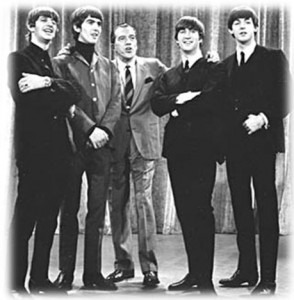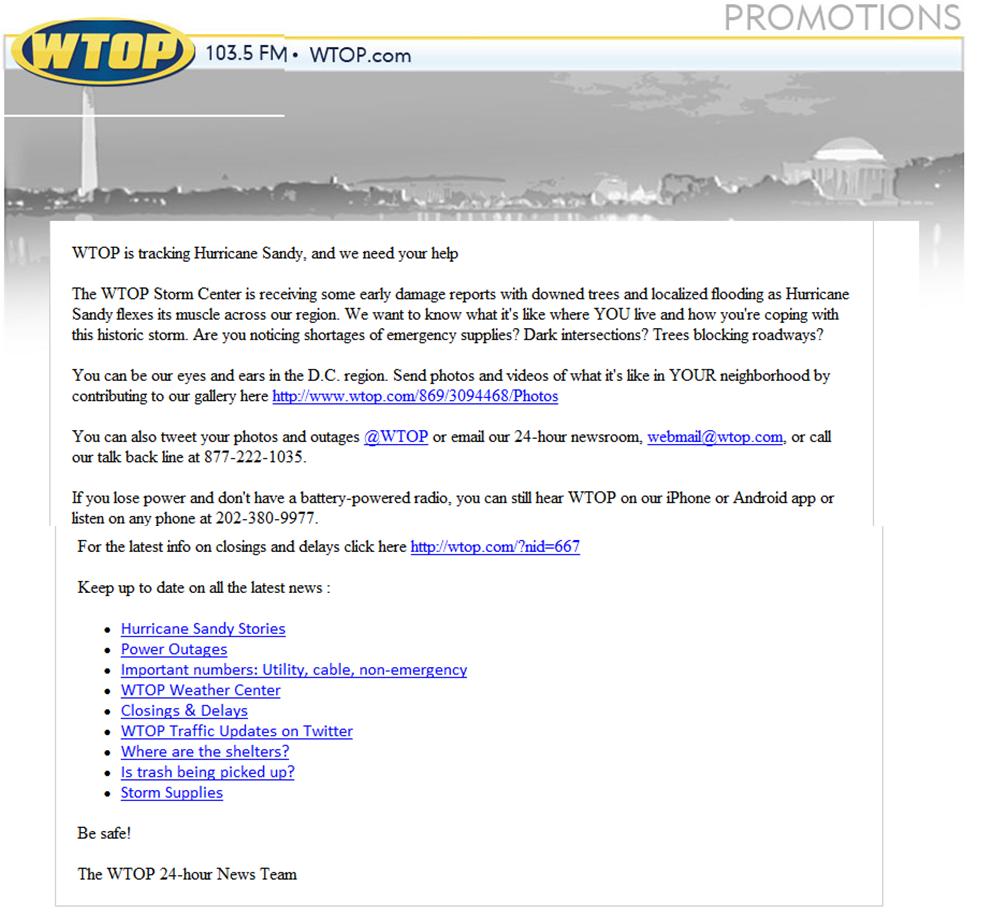As the guy who brought Classic Rock to radio, I am frequently asked why Rock has not produced another band of the magnitude of the Beatles. The reasonable answer is that the media world of the ‘60s was so much more simplified and focused than it is today.
 When you think back on those famous Ed Sullivan shows, the Beatles’ first appearance on February 9, 1964, attracted 73 million viewers. In contrast last month, 60 Minutes came in second for the entire week with nearly 16 million viewers. And that’s in an America whose population has grown substantially over the past 45 or so years.
When you think back on those famous Ed Sullivan shows, the Beatles’ first appearance on February 9, 1964, attracted 73 million viewers. In contrast last month, 60 Minutes came in second for the entire week with nearly 16 million viewers. And that’s in an America whose population has grown substantially over the past 45 or so years.
It’s this media fragmentation that goes a long way toward explaining why it is so challenging for any performer to become as mass appeal as the Fab Four. Part of the explanation is that there was a lack of program competition and choice for Americans watching TV back then.
But that’s hardly the whole story. In that Golden Era, TV had a communal quality. Oftentimes, the family got together in front of the only television set in the house to watch a favorite, mass appeal program like The Ed Sullivan Show. TV was often a group activity, shared by everyone in the family. And the lack of remote control devices kept channel-changing at a minimum. Yes, you even sat through Topo Gigio and the commercials.
That type of community – a medium that brings millions of people together in the U.S. – and around the globe – just isn’t possible today in a world where there are hundreds of cable channels, an infinite number of websites, and more screens in the average household than toothbrushes.
Or is it?
Because to a great degree, building communities is what social media is doing, especially when there is a major event, from the Academy Awards to what’s happening with Hurricane Sandy to the Presidential election.
I had dinner with a group of media professionals the other night, and Scott Westerman (one of MSU’s finest and now head of their alumni association) asked me, “Whatever happened to Neo Radio?”
And the answer was simple: Neo Radio was an operating philosophy for radio that we built out about eight years ago, centered around the notion of giving the audience a seat at the table – respecting their input as listeners and incorporating it into a station’s programming, strategy, and tactics. It’s just that Neo Radio came along at a time that preceded “social media,” and our timing was just a bit off. But now as we look at what is happening to consumers’ relationships with the media they consume, this new paradigm is moving closer and closer to what we envisioned in a “Change This” article back in 2005 that talked about Neo Radio.
While various tenets and examples in that think piece are dated or have been lapped by technology, the basic underpinnings of defining a new relationship between a station brand and its listeners are very much in place today.
Fast-forward several years, and that is precisely the impact that social media is having on radio right now. The funnel has been flipped – radio stations are not just pushing out messages to a mass undifferentiated audience; instead, they are pulling in communities of listeners who are organized in tribes of their own on Facebook, Twitter, Pinterest and beyond.
In a way that is much different than quaint family scenes gathered around the television set, Americans – and people around the world – were looking at their laptops, smartphones, and tablets, following the Hurricane Sandy developments on all these outlets. The difference is that they were also participating – uploading pictures, video, making comments, and most importantly – sharing their information and content with others.
A couple days ago, Bill Weston’s story about how MMR’s Pierre Robert connected his audience with a caravan of Alabama Power trucks headed to New Jersey talked about how different kinds of people shared this experience. On Twitter, hashtags (like #Sandy) are the digital conduits that connect millions of storytellers with an event that impacted millions of people.
The days ahead will be filled with stories about how radio stepped up, stayed on the air, connected people, and served its communities. There will be amazing accomplishments about how station staffers stepped up, pulled together, and heroically entertained and informed in the face of another extreme weather event.
Some stations truly got out in front of the tragedy, proving once again that an emergency plan – a strategy – is essential to navigating unknown waters. WTOP sent out this email on Monday, October 29 to get out ahead of the coverage, and to rally audiences everywhere, welcoming their content and observations. Yes, giving listeners a seat at the table.
If you’ve been putting off figuring out how to engage your listeners via social media, an event like Sandy ought to be your wake-up call that there is indeed “climate change” in radio.
Casting aside questions like “Can we make money on Facebook?” enlightened stations are coming to the understanding that a connected, involved and engaged audience is an asset that pays off in myriad ways – from building better brands to nurturing more loyal listeners who will talk about your exploits and share your stories with their communities.
You may not see these results on a balance sheet nor are they kinds of success stories that Wall Street wants to see, but the ability to connect in a personal, eye-to-eye way with thousands of customers and fans provides radio with its “second screen” – engaged, loyal communities that have an opinion and the ability to create and share content.
It is hard to believe that just a couple years back, a certain major broadcasting company banned access to Facebook on all station computers to avoid distractions and to ensure their employees weren’t wasting too much time on social media while at work. Somehow, the connection between Facebook and the audience was not on corporate’s radar screen.
Today, understanding and skillfully navigating social media – the platforms, the rules, and most importantly, how your audience uses it – are table stakes in the new relationship between station brands and their customers. Our hire of Lori Lewis nearly two years ago has been a game changer for our company, and has helped us advise station brands about how to navigate and succeed in this space.
Will there ever be another Beatles and a collective pop culture experience like there was in 1964? That’s a question without an easy answer, but a connected world is not only possible but is happening right before our eyes. So, the answer is, “You never know but don’t rule it out.”
We would love to hear your stories about audience connection, social media, and your changing brand.
- A 2020 Lesson?It Could All Be Gone In A Flash - April 24, 2025
- How AI Can Give Radio Personalities More…PERSONALITY - April 23, 2025
- Can Radio Afford To Miss The Short Videos Boat? - April 22, 2025





Oh, the irony. In an age when radio has abandoned companionship and community involvement for the sake of a “more music, fewer songs” approach on the air, we are looking to Social Media to fill that void? We cannot create relationships via Facebook if we don’t have them on the main channel.
BTW – WTOP is a great example. That is much more than a news station.
Exactly, Steve. WTOP doesn’t just do well because it’s a news station in the heart of the nation’s capitol. Thanks for taking note of that and for reading the blog.
Fred,
So true, so true. Social media plays SUCH an important part in radio…and every OTHER business. That’s why Twitter and Facebook have become such an integral part of my new syndicated 1-hour radio show titled “BEATLES WEEKLY”. With my new show, I need to get the word out-FAST. Social media is a big help in doing that.
Suffice it to say…
Any company that ignores social media may wind up like Pete Best.
Love the blog-keep up the good work!
All my loving,
JC Haze
Thanks for chiming in, JC. And the Pete Best analogy is a good one. Every brand needs to re-examine its business model. Social media provides incredible opportunity for communties to enjoy and appreciate media brands.
To keep the Beatles analogies going: Fred, you’re the radio industry’s Billy Preston.
Great post. Love the WTOP example.
Flattered, James. Thanks for reading the blog & taking the time to comment.
Appreciate it, James. Thanks for reading our blog. There’s a reason why WTOP continues to be an industry leader.
Fred’s points are dead on. Lori Lewis is really on this. It’s such a huge opportunity for all of media. Many people now use their brands to create multiple content channels that are revenue producing. You can even have your Facebook be an all video site.
‘The Medium is the Message” marshall mcluhan has never been more in play. That’s why Newspaper and Television started with a faster speed, they have more content. Radio has an edge on entertainment and targeting by lifestyle. They are passing up not only the chance to engage with their audience, they are passing up the chance to find their true creative skills again.
Anyway good stuff Fred.
Dave Presher President and CEO of http://www.involutiondigital.com
Dave, always enjoy your insights and comments. Thanks for reading our blog and for participating in the conversation.
Great article. Also check our the original “Neo Radio” everyone its a great read. We live in challenging but fun times.
Thanks, Bill. The “Neo Radio” piece reads like it was written 30 years ago, but some of the fundamentals apply today. Thanks for the comment & for reading the blog.